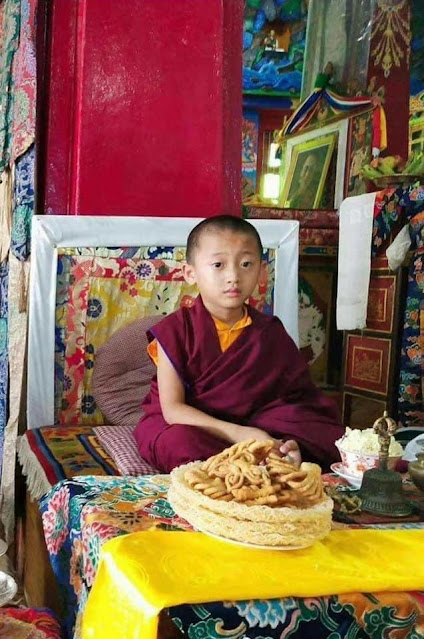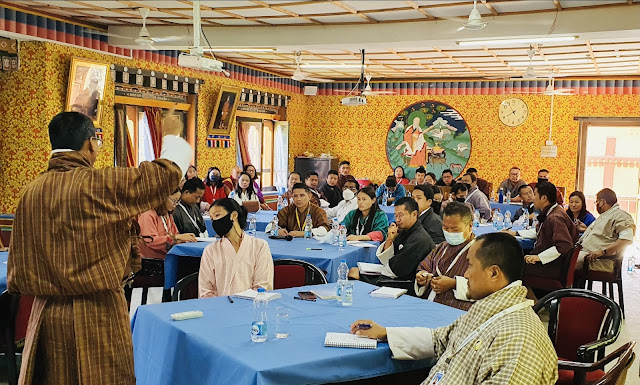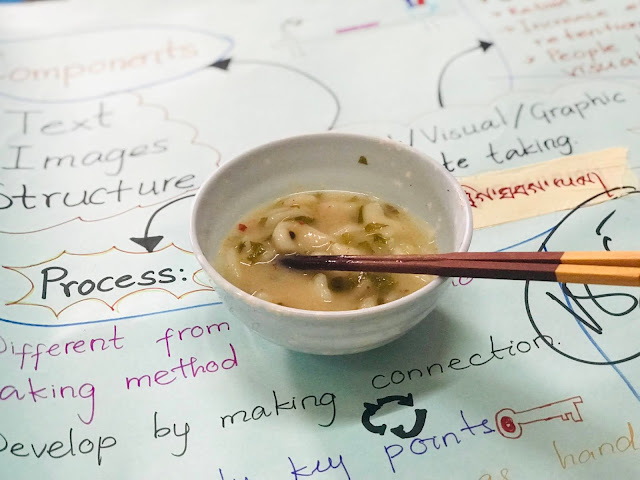Today is the 8th birthday anniversary of Lama Chime Dorji’s Yangsi( Rigdzen Lhubdrup Dorji).
Lama Yangsi was born to a Yab Drupthob and late Yum Kuenzang Yangden in 2013 in Gedu Bhutan.
At the age of three, Yangsi was officially recognized by his Holiness kyabje Dudjom Sangye Pema Shepa Rinpoche, as a reincarnation of Lama Chime, following signs and indications of his birth.
Yangsi Rinpoche is currently residing at Durpin monastery in Kalimpong, studying under the tutelage of Trulku Rinpoche, the principal at Durpin Goenpa.
Trashi Deleg Yangsi La.
1. Biography of previous Lama Chime.
Lama Chime Dorji (1920—2012) was a very close disciple of Dudjom Jigdrel Yeshi Dorji Rinpoche.
Born in the Ngari area in Tibet, close to Mount Kailash, he was trained in Dudjom Tersar lineage by Degyal Rinpoche, a direct student of Thraktung Dudjom Lingpa, the predecessor of Dudjom Jigdrel Yeshi Dorji.
Lama Chimi was 15 years old when he met Dudjom Rinpoche at around 1935, and had become Rinpoche’s primary student, and also a chat master. He follows Dudjom Rinpoche to Lama Ling.
Lama Chimed oversaw the construction of two Zangdogpelri monastery in Tibet. He traveled to Tso Pema, in India along with his teacher, Dudjom Rinpoche and few years later became incharge of Zangdokpalri Monastery, in Kalimpong. Lama Chimi, although an accomplished practitioner remained a recluse for many years.
2. Receiving teachings from Degyal Lingpa
First, he received instructions on the Dudjom Tersar Ngöndro from Degyal Lingpa (1873-1933), an extraordinary main disciple of Dudjom Lingpa who had settled in Namkha Khyung Dzong.
Lama Chimed Rinpoche was fortunate to have received all the empowerments and oral transmissions of the Dudjom Tersar lineage from Dudjom Rinpoche himself, teacher of his teacher Degyel Rinpoche.
3. Practices and teachings
Following this, Lama Chimed Rinpoche he gave rise to the vast motivation to complete all the accumulations and purifications of the ngöndro in retreat. His accomplished was little known until Dujom Rinpoche asked of him to begin teaching in his absence. Dudjom Rinpoche was traveling to the went then and empowered Lama Chimed to actively benefit sentient being and Buddhadharma.
Lama Chimed was also referred to as Togdhen Chimed by his peers and forebears. Many of the accomplished Ngagpa Lama from Bhutan and Tibet, and aged practitioner Tshampa were his disciples.
Lama Chimed was extremely disciplined, rarely taught and feared for his temperance. His thunderbolt fierceness was like lightning that cut through arrogance and ignorance of his few disciples. Lama Chimed was one of the very few teachers who was the sublime authority to teach and train fortunate disciple exclusively in Throma Nagmo Chod practices, the Phowa and Semthrid.
Lama Chimed had begun to teach to fortunate people from Bhutan, Tibet, India and the west at the peak of his age. It is said that Lama began to receive disciple more readily when he was around his seventies. Lama Rinpoche always denied of any accomplishment to teach. He lived a life of recluse, in absolute modesty and quietitde.
4. Becoming disciple to Lama Chimed
Owing to my immeasurable karmic deeds and past life connection, I met my Tsawai Lama in 2003. I had taken into practicing Throma Nagmo Chod along with community of beginners at Gedu immediately after a devastating divorce. The sanctuary I sought was the beginning of my spiritual journey that would take me to Kalimpong for the next several years to receive teachings, directions, commentary and practices from Lama and Khandro Ani Kuenzang. Kalimpong then became by spiritual home.
My father is also disciple of Lama Chimed and had received teachings several times before Lama became my teacher. When I was small, studying in primary school, I remember receiving Chaag wang at the Khaling Muenseling school principal’s residence. My father, the principal and few teachers had invited Rinpoche. I didn’t know that the man who I saw with white Chuba was Lama Chimed then. When father told me that I had received Wang from Lama many years ago, I realised, I had the fortune to have become his disciple.
The Throma practitioners from Gedu began receiving teaching, from preliminary Ngondro to Dzogchhen, taught directly by Lama himself. The first group of people were either members, officers of Tala Hydroelectric Project Authority officers, their spouses and lay people. When I joined the group, they had begun to practice Tersar Throma Chod and were practicing every evening in a group.
From 2003 onwards, Lama began to teach increasing number of devotees from Gedu, led by Lopen Tshering Tashi, and from Thimphu and other parts of Bhutan. It was the beginning of another era of teachings of Throma teachings for many people of Bhutan.
In 2012, when I was at Thailand, pursuing my masters in Educational management studies, I heard that my Tsawai Lama had attained absolute state of being. My Tsawai Lama then was 92 years of age.
Lama Chimed was a very committed practitioner. He offered Luibjin Chod practice every night at nine to his last day. Lama was known to never sleep like common people do. When I stayed at Kalimpong, near Lama on many occasions, I have never seen Lama lying down to sleep for the night. His practices exemplify devotion and discipline very few practitioners can emulate today.
TODAY AS WE OFFER TRASHI DELEG TO THE INCARNATE YANGSI ON HIS 8th BIRTH ANNIVERSARY, I RE-LIVE THE TIMES FROM 2003 to 2012 and the years thereafter.
I offer my prayers for the king life and wellbeing of Yangsi Rinpoche and Ani Khandrola.


















